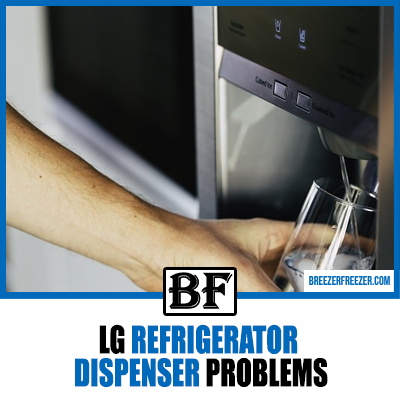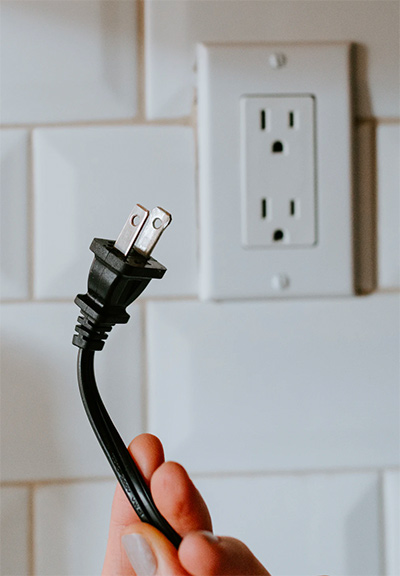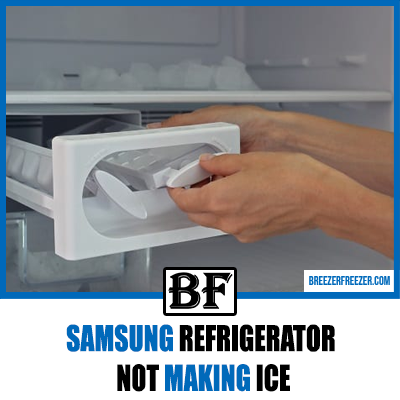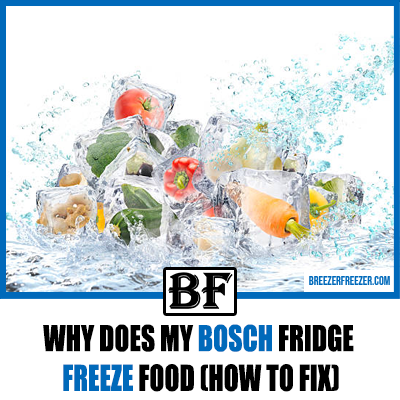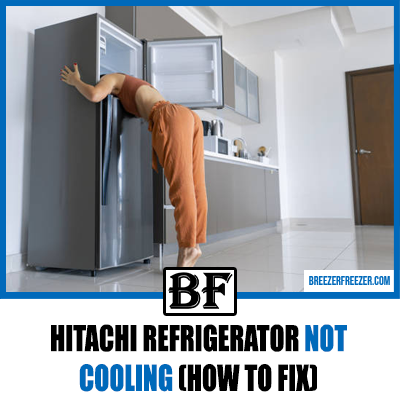LG Refrigerator Dispenser Problems
Built-in dispensers are now an indispensable part of any modern fridge.
After all, it’s easy to get used to cool and crisp drinking water or fresh ice cubes dropping straight into your glass on demand. So, when your LG refrigerator ice and water dispenser stops working altogether, you may not be ready to let go of the luxury.
Sometimes, the water dispenser may be working, but the water may have a weird taste. Or perhaps, water trickles down drop by drop from the dispenser, taking away the convenience and time-saving benefits of the feature.
Similarly, an ice dispenser may stop producing ice, make too much ice, or dispense sludgy ice. Indeed, there are many things that can go wrong with built-in dispensers.
And to help you out, we have rounded up the most common issues related to any LG refrigerator water and ice dispenser and some possible solutions.
LG Refrigerator Water Dispenser Stopped Working — Causes And Solutions

1. Defective Dispenser Switch
A dispenser switch signals the water inlet valve to open up and supply water through the dispenser. So, if the switch is broken or does not receive any voltage, the fridge will be unable to dispense water.
How To Fix It
Fortunately, you can spot defective dispenser switches with a physical inspection. However, to be safe, we recommend performing a continuity test to ensure that it is functioning. If not, you will have to replace the part.
2. Defective Refrigerator Door Switch
The door switch is an essential component of the fridge, which automatically deactivates the water and ice dispenser when the door is open. That said, a broken door switch may prevent the dispensing system from reactivating.
How To Fix It
First, you must diagnose the issue using a multimeter and test the door switch for continuity. If the door switch does not have any continuity, the best solution is to replace the part.
3. Defective Water Inlet Valve
The water inlet valve opens up to let the water in, after which cold water is dispensed into your cup or bottle. Needless to say, a broken or faulty water inlet valve may block the water flow, which is why the dispenser stops working. And if you don’t find any issues with the component, the culprit may be a low water valve pressure.
Either way, a defective water inlet valve may be accompanied by a whirring sound, so consider checking the part if you hear an unusual noise coming from the dispenser.
How To Fix It
As a rule of thumb, the water valve pressure should be at least 20 psi for the water dispenser to function properly. To ensure that it is at optimal levels, you must use a multimeter and conduct a continuity test. On that note, you will have to replace the part if the multimeter reading shows that the pressure is below the desired levels.
4. Frozen Or Kinked Water Supply Line
Your refrigerator dispenser and ice maker receive water from your home water supply through a water line. A kinked or frozen water supply tube prevents water or air from passing through, thus affecting the cooling abilities of the fridge, in addition to restricting water flow.
How To Fix It
Gently straighten the supply tube to get rid of any kinks and bends. And in case of a frozen water line, use a hairdryer to thaw and melt any ice blockages.
On a side note, frozen tubes may occur when the freezer temperature is not high or low enough. That said, you can prevent this issue by ensuring that the freezer temperature remains between 0 and 10 °F at all times.
5. Clogged Water Filter
The reason behind a water dispenser not working can be traced to a clogged filter. Here, debris in the water line from rusty pipes and other sediments collected over months may cause clogs. This issue usually crops up when users have not changed the water filter in more than six months.
It is also worth noting that loud noises coming from a filter may indicate that the LG refrigerator water filter is clogged.
How To Fix It
A temporary fix would be to use a bypass plug to remove the clog. Fortunately, this instrument comes with the unit — all you have to do is remove the housing and attach the bypass plug.
However, you should consider replacing the part if a clogged water filter is a frequent occurrence. Anyhow, experts recommend changing an LG refrigerator water filter every six months to maintain water quality and the water flow.
6. Dispenser Control Board
Once you have inspected all the components and ruled out the possibility of faulty parts, you should check the dispenser control board. A dispenser control board regulates the functions of all the water dispenser components. So, although rare, a malfunctioning dispenser board can affect the working of one or all of the parts in the dispenser system.
How To Fix It
Use a multimeter and perform a continuity test to identify whether the dispenser control board is defective. If the reading shows that there is no continuity, it is best to replace the part instead of repairing it.
LG Refrigerator Dispensing Water Slowly — Causes And Solutions

Nobody likes waiting for their cup or bottle to fill drop by drop. In fact, filling up water bottles and leaving them in the fridge to cool may be more convenient.
On that note, you should first conduct a test to check how long it takes to fill an eight-ounce glass with water. If it takes more than eight seconds, there may be something wrong with the water dispenser.
How To Fix It
The most common cause of this issue is a slow water flow rate or low water pressure.
You can test and restore water flow by attaching the bypass plug provided with the unit. Observe whether the water flow increases once you have attached the bypass plug; an increase indicates that you have to change the water filter.
Additionally, smoothen any bends or kinks in the water line to ensure that the water supply is not interrupted. Similarly, the water inlet valve should be fully open to allow water to pass through.
LG Refrigerator Ice Dispenser Stopped Working — Causes And Solutions

1. Faulty Dispenser Switch Or Actuator
Since the dispenser switch transmits voltage for the ice dispenser to run, it needs to be in working condition. At the same time, the actuator is a crucial component that powers on and activates the switches.
How To Fix It
First off, you must perform a continuity test to ensure that the dispenser switch and actuator are functioning. If not, you will have to replace the parts.
2. Faulty Dispenser Door Motor
As you can already guess, the dispenser door must be open to release the ice. That said, a malfunctioning door motor won’t dispense ice as it remains shut to prevent cold air from escaping.
How To Fix It
A dispenser door that does not receive power can be diagnosed with a continuity test. The best solution for a faulty dispenser door is a replacement.
3. Broken Auger Motor
The ice dispenser comprises several components, including an auger motor, which regulates the rotation of blades that send ice cubes down the dispenser chute. That said, ice cubes will remain stuck in the ice bucket if the auger motor stops working.
How To Fix It
The easiest way to diagnose the issue is by removing the ice bucket and moving the blades around with your hand. If there is no resistance, you will have to run a continuity test to confirm whether the auger motor needs to be replaced.
4. Broken Dispenser Solenoid
Once the ice cubes pass through the dispenser door, the door flap opens up to release them into your glass, mug, or jug. Here, the dispenser solenoid regulates the opening and closing mechanism of the door flaps.
How To Fix It
The quickest way to test the solenoid is by rotating and feeling the actuator pins for resistance. Alternatively, you can conduct a continuity test for a more accurate diagnosis.
5. Malfunctioning Dispenser Control Board
Whether dealing with an ice or water dispenser, always leave the control board for last. Although relatively rarer, a malfunctioning dispenser control board may affect most parts of the dispenser system.
How To Fix It
Troubleshooting issues in the circuit board may be challenging if you are not well-versed with electrical appliances. That said, we recommend hiring a professional to diagnose the problem and handle any repairs or replacements.
Looking for a new LG? Check out our LG Side-by-Side Refrigerator Review, LG Instaview Door Review and our Best LG Fridge Under $3000 review
Frequently Asked Questions
1. How do I fix a leaking LG refrigerator water dispenser?
First off, you have to identify the source of the leak. Here are three possible causes of a leaking LG refrigerator water dispenser and a few quick fixes:
A. Water Inlet Valve
A water inlet valve delivers water to the ice and water dispenser from the main home supply. So, if you notice a leak in the system, you must first ensure that the valve is tightly secured. On the other hand, a water inlet valve may get cracked or worn with age and start leaking. In this case, you will have to install a new replacement part.
B. Water Filter
Improper installation is the most common cause of a leaking water filter. So, remember to refer to the user manual while replacing the filter, which should be done once every six months.
On the other hand, a cracked water filter head or torn seal calls for instant replacement.
C. Water Tank Assembly
A broken water tank that is leaking can be easily identified with a physical inspection. While gluing the cracks may work temporarily, buying a new water tank to avoid future leaks is perhaps the best solution.
2. How do I fix a blinking dispenser light?
A blinking dispenser light on the LG refrigerator control panel indicates that the capacitors on the control board are burnt or bloated. To fix the issue, you will have to replace the control board, which is often best left to the experts.
But, if you’re up for the challenge, you must first ensure that the fridge is disconnected from the power outlet. Then, uncover the main control board and remove the top clip to access the defective unit. As an additional tip, remember the orientation of the screws and clips to avoid any issues while reassembling the parts.
Now, remove the older unit and replace it with the new control board. Check if the blinking has stopped once you have attached the clips and screws to fasten the replacement part.
Other Brand Refrigerator Dispenser Problems:
Final Words
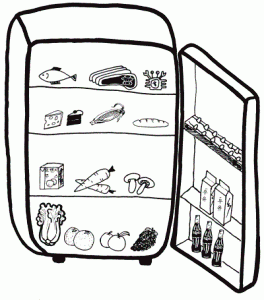
Usually, when your LG refrigerator water dispenser stops dispensing water, it means that a blockage or faulty component has stopped the flow of cool and crisp water in its tracks.
Similarly, lack of ice production may not be the issue if the ice dispenser stops working. In fact, issues with the solenoid and auger, which are responsible for delivering ice cubes from the bucket, could be the culprit.
Fortunately, most of these issues can be diagnosed without professional help and fixed by installing replacement parts. On that note, remember only to use OEM components to avoid more problems down the line.
Also, considering how improper installation can cause leaks and other issues, you should always refer to the user manual provided with the unit. And, if in doubt, don’t hesitate to call LG customer support for guidance and other maintenance tips.
